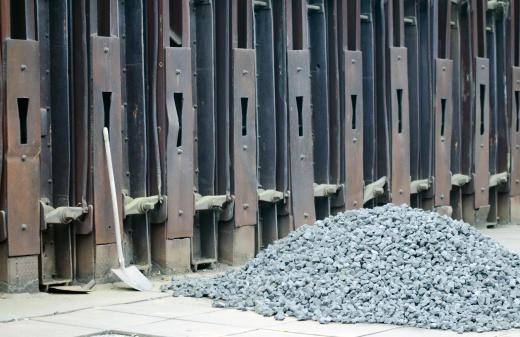The common cement block is known in the concrete industry as a concrete masonry unit. Usually the unit designation is abbreviated to CMU. The typical concrete masonry unit is a rectangular block manufactured of Portland cement and an aggregate, most often sand or filtered gravel. This process produces a high density concrete block.
Concrete masonry units may be actual high-density concrete blocks, or they may be lower density cinder blocks, manufactured with an aggregate of fly or bottom ash. Additionally, there are clinker blocks, manufactured with aggregates of smelting wastes, usually coal, coke, slag, or grit. Aerated concrete may be used in the manufacture of very strong, yet relatively lightweight concrete masonry units. However, the prohibitive cost makes the use of aerated CMU's fairly rare.

The most common concrete masonry unit is considered to be 8 inches by 8 inches by 16 inches (20 cm by 20 cm by 41 cm). Actually, all CMU’s are 3/8 of an inch (1cm) smaller all the way around to allow for a layer of mortar between blocks. In the U.K., where the typical concrete masonry unit is known as a breeze block, the dimensions are significantly different at 17.3 inches by 8.5 inches by 3.9 inches (44 cm by 21.5 cm by 10 cm).

The ordinary concrete masonry unit usually has two or three holes in the unit, which are sometimes called cores. These holes, or cores, serve a number of functions, including cutting weight and as an insulation factor. Also, steel rebar is often inserted into the core holes to provide added strength and stability to a concrete block load-bearing wall. On lower structures, the holes may be filled with gravel or sand for the same purpose.

Concrete masonry units, though used mainly in utilitarian structures, are often employed in home building as foundation blocks. Concrete block foundations are strong, stable, and, above all far more inexpensive than brick, stone, or poured concrete foundations. Their only drawback may be the blandness of the facing. Stucco, paint, plaster, etching, or siding, however, may be used to improve the appearance of concrete block foundations and walls. Additionally, concrete masonry units may be manufactured in almost limitless shapes, textures, and colors.
An individual who works with CMUs is commonly known as a mason. The essentials of masonry, of course, involve mortar and masonry products, such as bricks and concrete blocks. All masons are familiar with the various construction properties, limitations, and adaptations of a particular type of concrete masonry unit.
